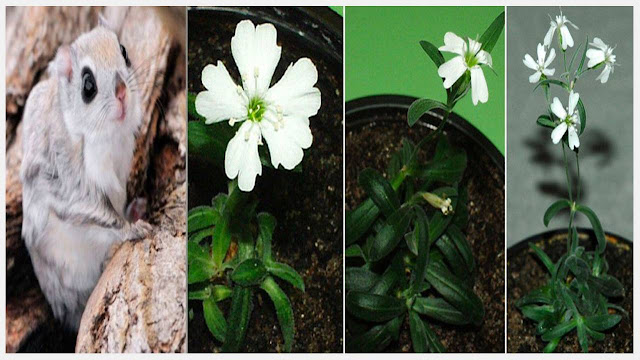Seedlings were born from 32,000 year old seeds.
Broke the record of antiquity. Earlier, the oldest seed from which the tree was born was 30,000 years old.
Flower seedlings were born from 32,000 year old seeds.A team of researchers found the seeds on the banks of the Kolaima River in northeastern Siberia, Russia. Radiocarbon dating confirms that the seeds were crushed during the Ice Age 32,000 years ago. Among the seeds found were both mature and immature seeds. 124 feet below ground level from the permafrost level.
Flower seedlings were born from 32,000 year old seeds.Bone fragments from prehistoric mammoths, bison and woolly rhinos also merged at that level. This permafrost is a special landform found in the coldest parts of the world, including the North and South Poles. This landform is formed when the temperature of a terrain is continuously below 0 degree Celsius for a minimum of 2 years or longer. When ice, rock, and sand particles freeze together, they turn into permafrost. As it has been frozen for a long time, this terrain is the source of various elements of biology.
Because many prehistoric specimens are also found here in fossil form.
According to zoologists and botanists, the seeds were stored by Siberian squirrels 32,000 years ago. The animal then destroyed the mature seeds itself. Perhaps the little creature instinctively tried to prevent germination from the seed. But some of the immature seeds obtained from permafrost also had the potential to germinate.
Scientists have given birth to new plants in the laboratory from those tissues. From the seeds of prehistoric times, seedlings of the species ‘Silene Stellophila’ were born in the laboratory. This tree is found in the Siberian region of Russia. But now the flowers of this laboratory-born plant look a little different than the flowers of this species. 1 year after birth, the ‘Silene Stellophila’ seedling has also produced new seeds. Reports of this research and experiment have been published in various scientific journals.
Modern scientists are giving special importance to permafrost in their research work. Elaine Saloway, an Israeli scientist, is optimistic about further research into permafrost in the future. His idea is to find many plants that may have been lost thousands of years ago in this subsoil. Scientist Salvage himself was involved with such experiments.
In his research, seedlings were born from a 2000-year-old date seed. For the sake of ecology, special emphasis is now being placed on seed survival around the world. Norway’s ‘Valbard Global Seed Vault’ has played a significant role as a treasure trove of frozen seeds.
Peter Raven, president of the Missouri Botanical Garden in the United States, hopes that once the natural mystery of freezing a seed for 32,000 years becomes clear, people will be able to save it themselves.
Earlier in 2012, another seedling of Silane Stellophila species was born in the laboratory from frozen seeds obtained from Siberia. But that seed was 30,000 years old. At the age of 2,000 years, the seed of the recent test gave him an ace.















0 Comments